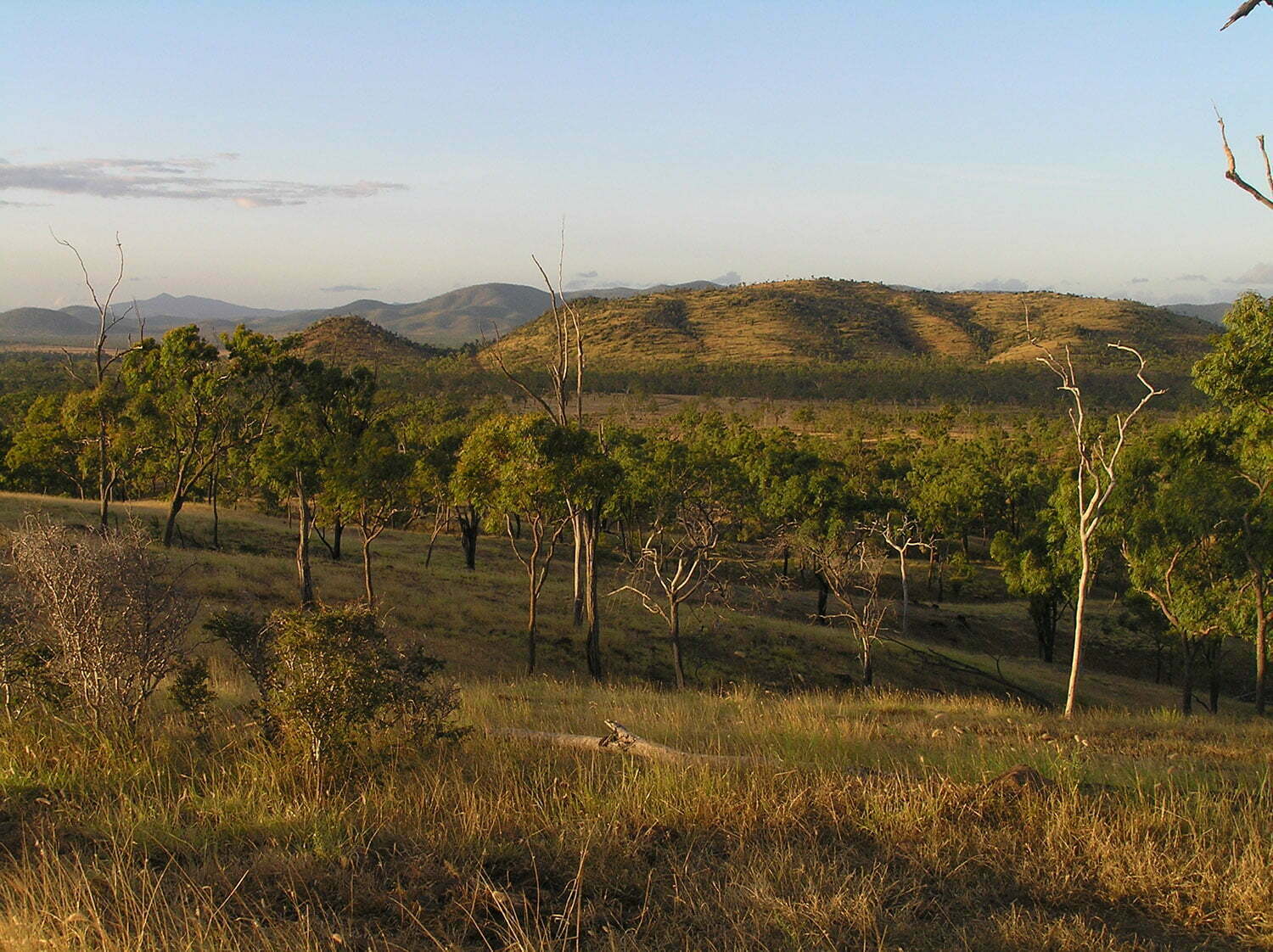We thought you might be interested in this great work on sediment and runoff being done by CSIRO researcher Scott Wilkinson in the wet-dry tropics of Northern Australia…
In early 2013 I had a cuppa with a grazing family on their property deep in the wet-dry tropics catchments that drain to the Great Barrier Reef. After several years of above-average rainfall, the grass down on the flats was thick and tall, so much so that it was taking more rain than usual to deliver surface runoff into dams. This property had transformed since the 1990s drought, when bare soil was exposed to an empty sky. At that crunch-point, a new generation had come to the reins, with new ideas about running the property, focused on the long-term future of themselves and the next generation. The family’s decision to destock and allow the land to recover had paid off and the pasture was now producing more forage than it had in a long time.
Sadly, not all properties bounced back to this degree, and after a wet period the climate cycle has turned again in the past 2 years. On many grazing properties the legacy of successive droughts has been ongoing soil erosion, and a transformation of pasture grasses from native perennial tussocks to annuals or colonising species. These colonising species can spread rapidly, but don’t grow as much forage or survive dry years as well. They often have shallow roots and small basal areas which are less effective at retaining soil and runoff during intense rainstorms.
Sediment loads in many of Australia’s tropical river basins are now several times higher than those before the 1850s. In some areas especially along the Great Barrier Reef, ecosystems are struggling under the extra load. Coral cover has halved since the 1980s, due to Crown of Thorns Starfish (COTS) outbreaks, cyclones, and so far a relatively small amount of thermal bleaching. COTS outbreaks have followed large floods, which deliver considerable amounts of nitrogen in particulate and dissolved forms. Water clarity, coral diversity and coral disease are also affected by fine sediment loads and organic matter. Coastal water quality, however, progressively improves in between flood events and this means that aquatic ecosystems will benefit from reducing erosion rates across extensive grazing areas.
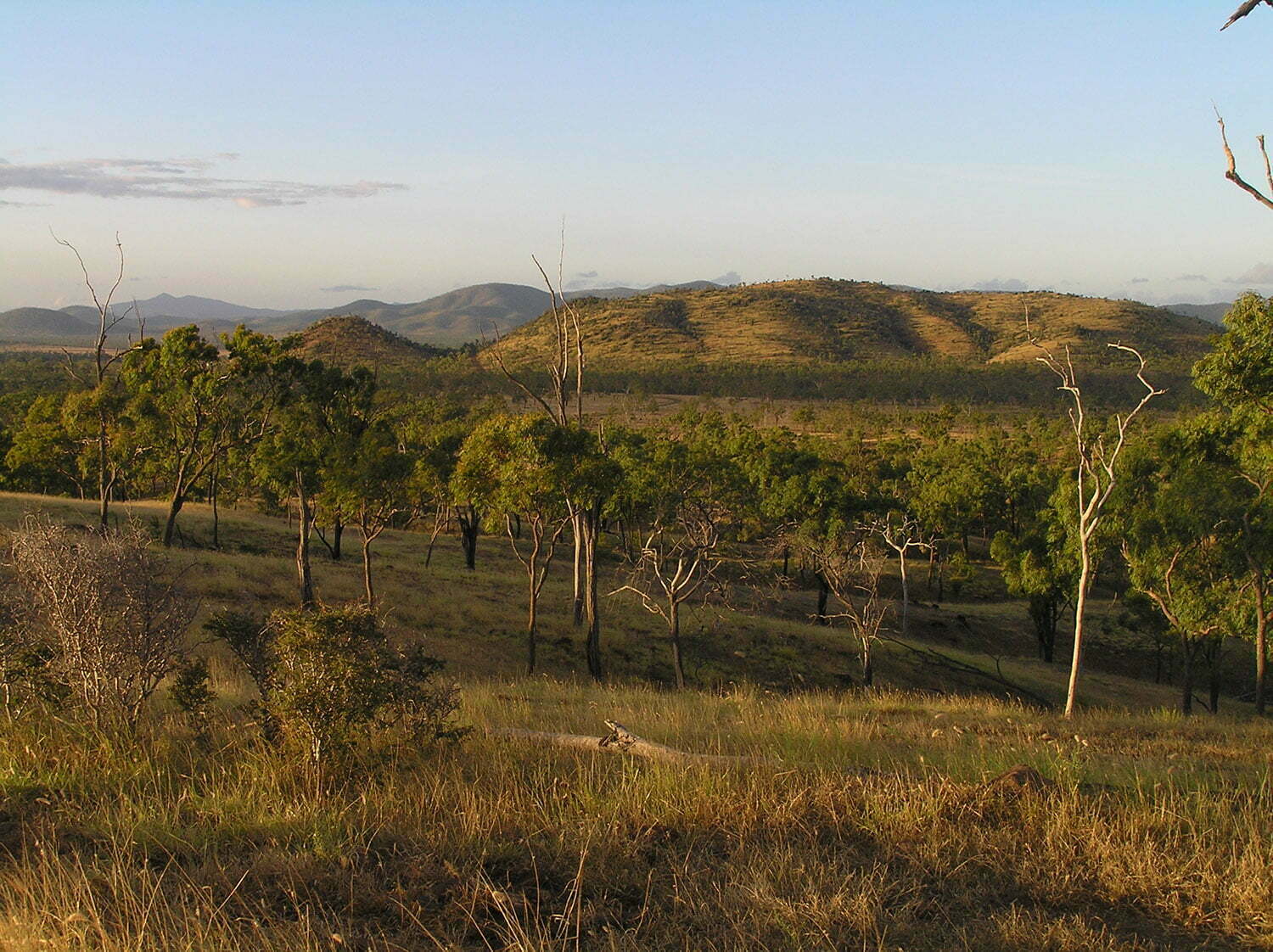
Grazing landscape in the Burdekin River Basin. Hillslope surfaces are a minor source of sediment provided coverage of perennial grasses is maintained. The majority of erosion occurs in degraded bare areas, gullies and streambanks. Photo - Scott Wilkinson
MANAGEMENT CHANGES CAN IMPROVE PASTURE PRODUCTIVITY AND DOWNSTREAM WATER QUALITY
A robust understanding of landuse impact on water quality is essential to guide public investments and to galvanise private efforts. While sheetwash erosion of grazing lands was once thought to be the dominant source of sediment delivered to the Great Barrier Reef Lagoon, source tracing studies have revealed that most river sediment is derived from subsoil in channel banks, gully networks which developed after the introduction of livestock grazing in the late 1800s, and deeply rilled and degraded zones covering a small proportion of the catchment area. Similar findings have been made in the Ord catchment in Western Australia. These dominant erosion processes are much the same as those that catchment management agencies have become familiar with in temperate Australia.
We now know that managing sheetwash erosion will not be enough to effectively reduce sediment loads in tropical Australia. It is easy to query “what can we do about gullies”, which have often been present for many decades, but a targeted and low-cost approach to erosion management can be effective if taken up as a priority.
Rehabilitating vegetation can shield subsoil erosion features like gullies and riverbanks from surface scour, trap seeds, and build root systems that reinforce soil and moderate soil moisture, increasing soil stability. Locating fencing to control grazing access is a no-regrets first step. Low-cost revegetation techniques are currently being trialled in gullies, including porous timber or stone traps. Planting may be required in very degraded areas. Intense grazing followed by long rest periods is being trialled in higher-rainfall areas. Tropical Australia also requires some important adaptations. Large floods and extensive properties mean that it can be more feasible to fence the floodplain in with the river, not just the riparian zone. Techniques will continue to develop, but we will need to see more targeted rehabilitation of channel erosion.
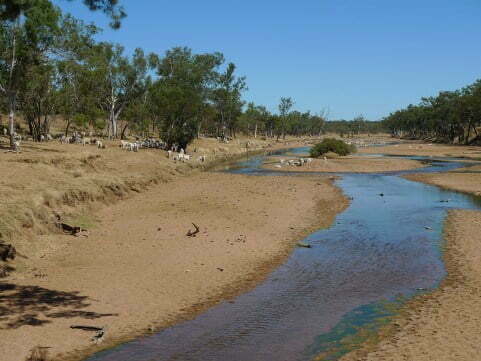
Uncontrolled stock access causes significant erosion sand water quality problems. Photo – Scott Wilkinson
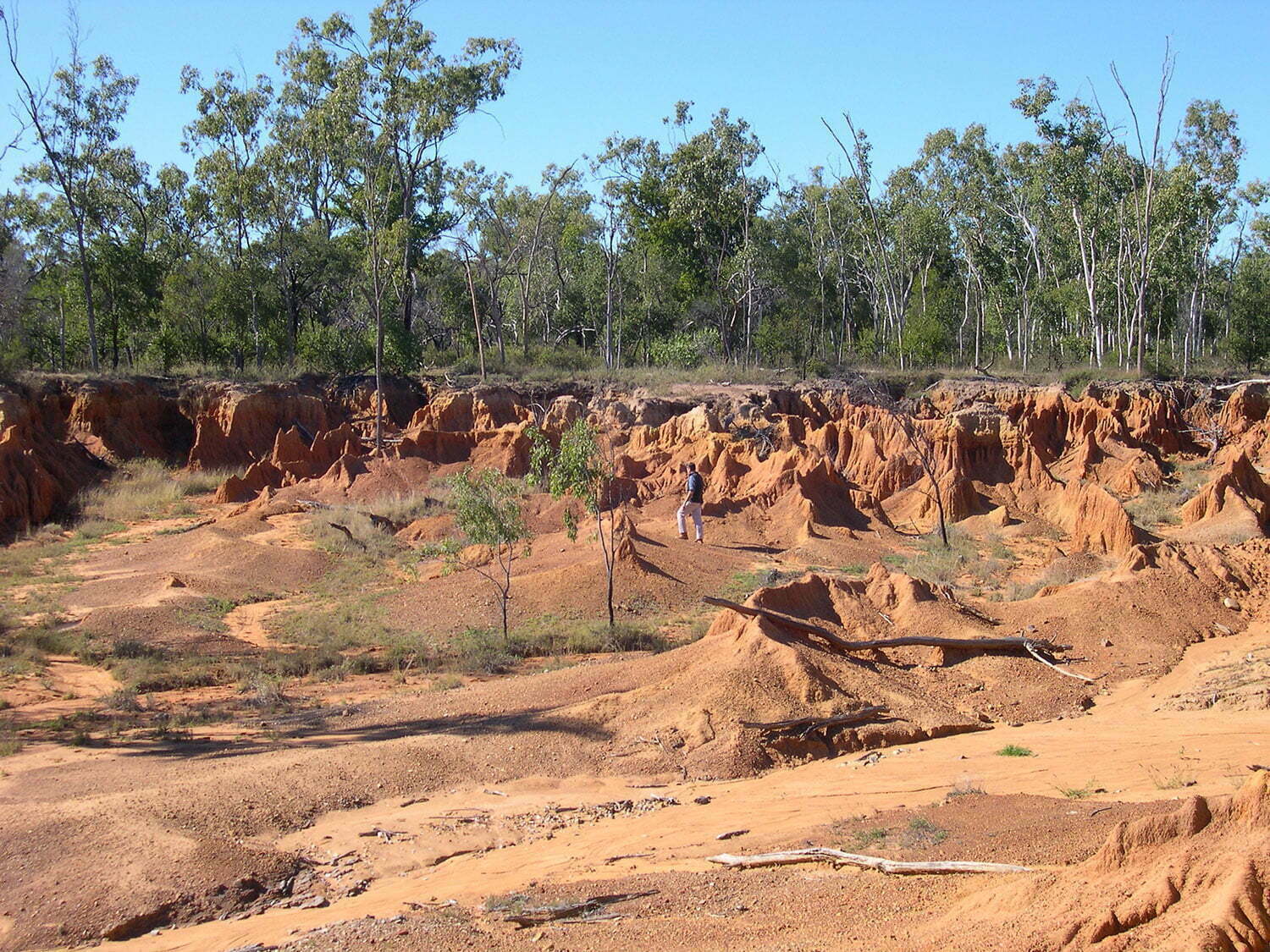
Gully scald and rill erosion in the Burdekin River Basin. Photo - Scott Wilkinson
Upslope from gully and bank erosion, the runoff volumes which drive erosion can be reduced by maintaining high levels of perennial tussock grass biomass, and retaining woodland trees. High surface roughness, large root systems, and healthy soil biota increase the size and availability of the soil moisture store, reducing runoff volumes in the most common small to medium events.
Managing biomass means managing grazing pressure, which is a big challenge in the extremely variable climate of northern Australia. Independent of whether continuous stocking or rotational grazing is practiced, informed decision making requires a “forage budget”. This is an annual or seasonal calculation of how many cattle can be supported for what period before the proportion of available biomass removed by grazing will exceed a threshold (commonly 20-30%) that puts pasture sustainability at risk. Cattle numbers in northern Australia are near record high levels, and need to be managed to sustain hydrologic function and forage production.
WORKING WITH THE LANDSCAPE
The twist in the tale is that grazing impact is never uniform due to variable distance to water and preferential grazing of ‘sweeter’ country. The landscape resistance to erosion also varies with terrain and soil. To graze within the erosion resistance and productive capacity requires tailoring land management to each landscape unit. Fencing is critical to distribute grazing pressure away from vulnerable areas like gullies and frontages.
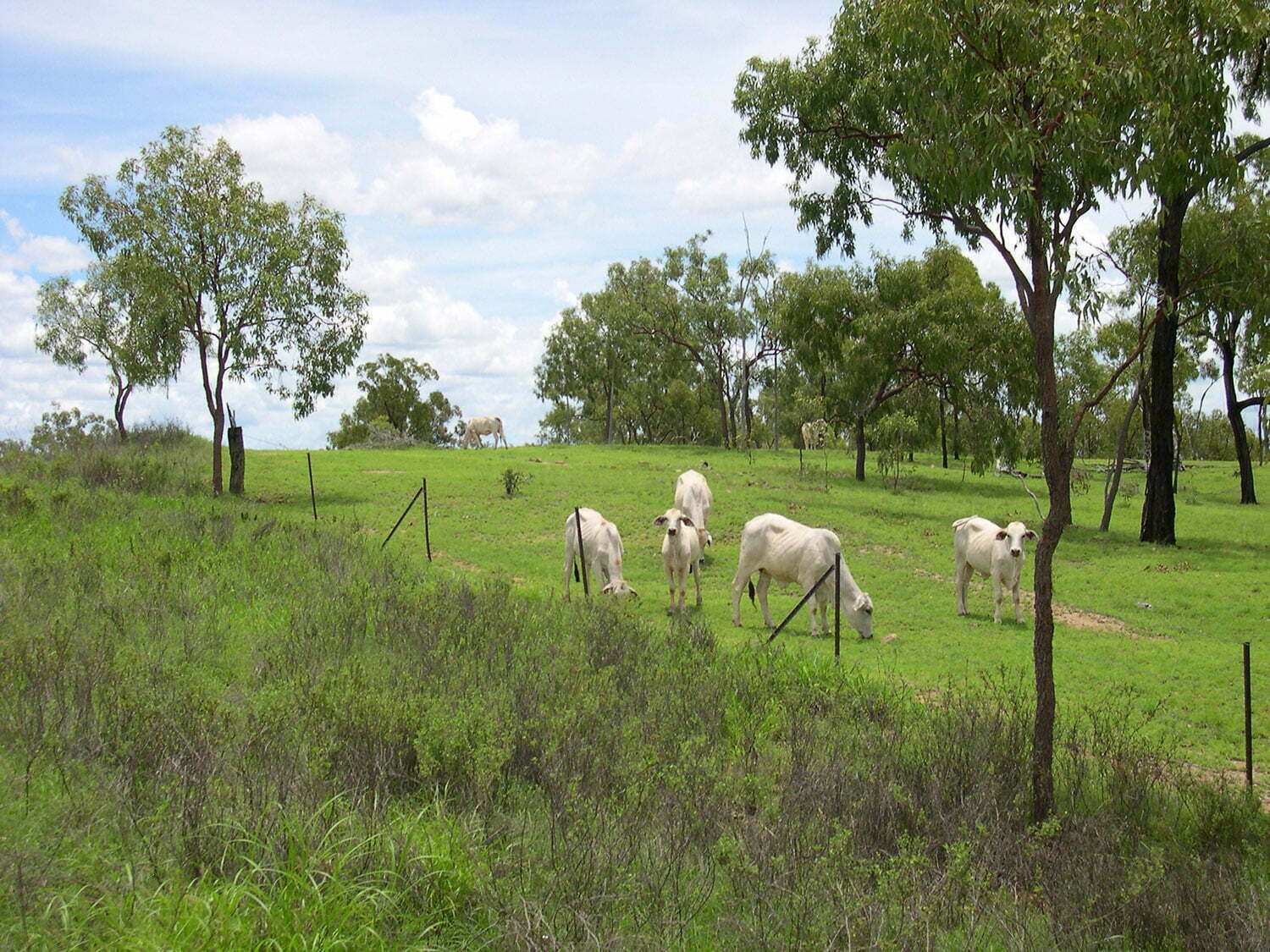
Fencing is highly effective at controlling grazing pressure to maintain high biomass and ground cover in areas vulnerable to erosion such as gullies and streambanks. Photo - Scott Wilkinson
The good thing for graziers is that rehabilitating vegetation to control erosion is complementary to sustainable forage management. Fencing and water points enable pasture resting, as well as controlling the distribution of grazing. Maintaining pasture at high biomass levels reduces erosion and runoff, but also expands the capacity of soil and plants to store and retain moisture and nutrients, to better support plant and protein growth in the weeks and months after rainfall. Grazing within the land’s carrying capacity has been shown to deliver more reliable and higher profits in the long run. For large properties worth millions of dollars, the long run is a big deal.
STRENGTHENING ADAPTIVE MANAGEMENT
Our work with landholders in the Tropics is showing that erosion management in grazing land needs to control the spatial distribution of grazing pressure, rehabilitate vegetation within legacy problem areas such as gully erosion, and control grazing pressure to sustain pasture productivity and reduce surface runoff. This approach can produce a win-win outcome for landholders and the environment by improving pasture productivity and sustainability. As yet, we have little hard data on erosion responses to these management strategies in tropical Australia. Monitoring and learning about the responses should underpin adaptive management, to ensure effective and efficient land management policies and programs. While there are many challenges, many freshwater and coastal environments across northern Australia remain in relatively good shape. This big place deserves our best efforts at managing water quality.
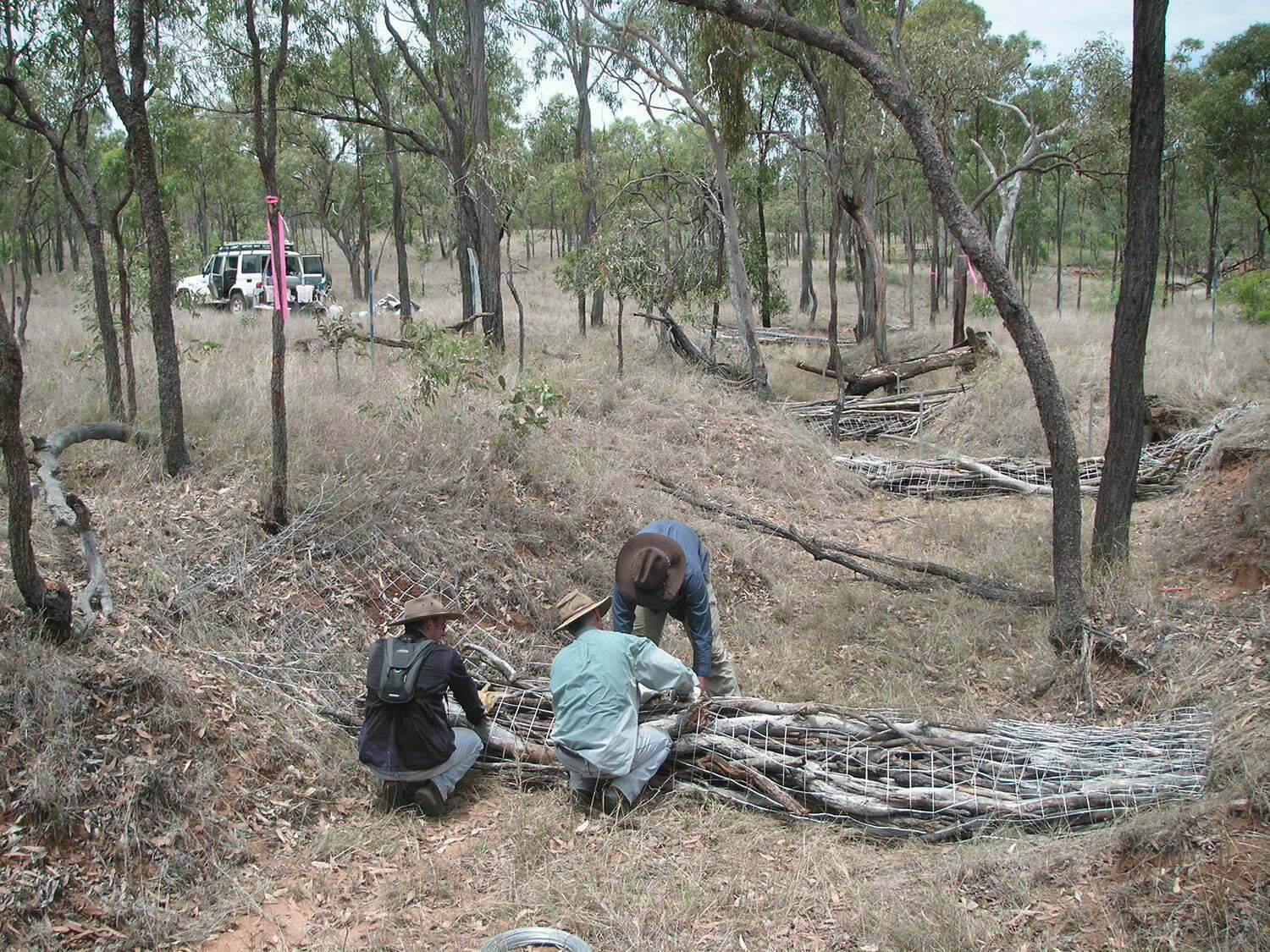
Installing porous check-dams to initiate revegetation on the bed of a gully. Photo - Scott Wilkinson
For further information:
You can read more about work like this in the recently published RipRap Magazine – Australia’s Northern Rivers and Estuaries.
Scott Wilkinson – Scott.wilkinson@csiro.au
http://www.reefplan.qld.gov.au/about/scientific-consensus-statement.aspx – This article does not necessarily represent the views of the Australian or Queensland Governments.
